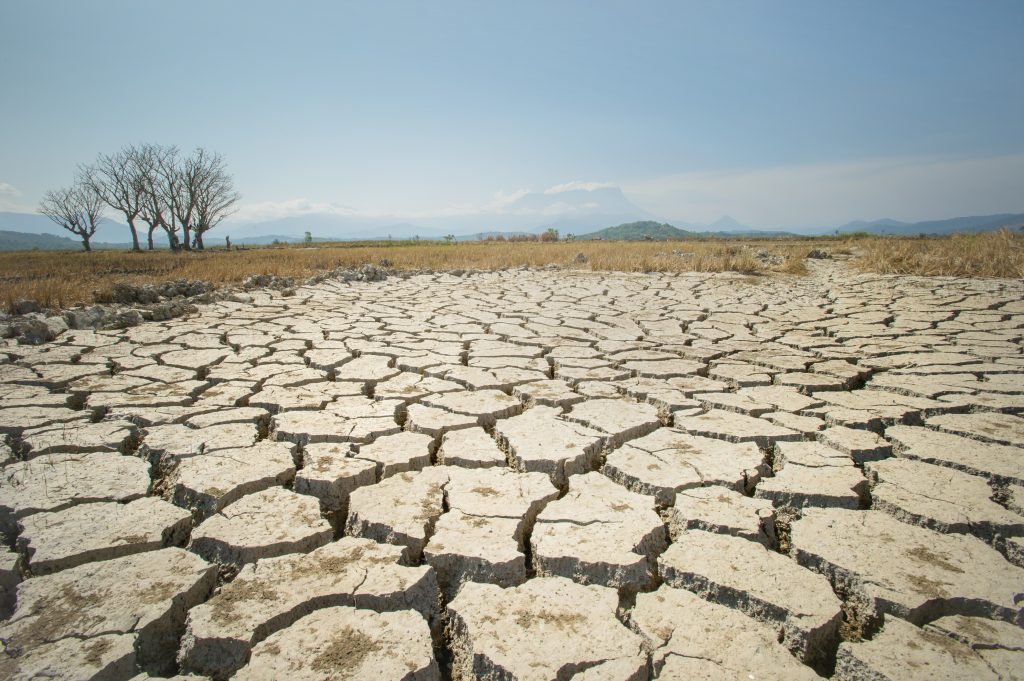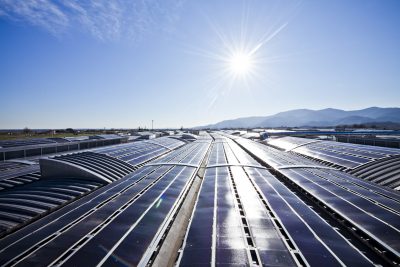New analysis suggests that the economic impact of a changing climate might be 10 times more significant than typical models assume. Climate economist and Ph.D. student at the University of California Bernardo Bastien-Olvera tells Future that climate justice’s links to social injustice can no longer be ignored
Typical analyses could be seriously underestimating the economic consequences of climate change. Researchers Bernardo Bastien-Olvera, Francesco Granella, and Frances Moore from the US and Italy set out to re-examine one of the fundamental assumptions economic models make when it comes to calculating the impact of carbon dioxide emissions: that annual temperature variations have no long-lasting impact on economic growth. Their study, published in Environmental Research Letters in August 2022, shows evidence that temperature changes had a persistent impact on GDP in 22% of the world’s countries over 10-15 years. The social cost of carbon could therefore be 10 times higher than economists previously assumed.
The economics of climate change
Whether shifts in temperature have long-lasting impacts on economic growth is an unresolved question, and is often unacknowledged by financial models. Yet in order to set climate targets and make predictions about our economies as global temperatures rise, it is essential to know whether the impact of changes in temperature compound over time. It will inform how we calculate the social cost of carbon, a fundamental metric which aims to account for the total present and future damage to human wellbeing caused by carbon dioxide being released into the atmosphere and is used by governments for setting figures like carbon taxes.
Typical economic analyses rely on integrated assessment models, which are based on a set of economic assumptions, including that temperature changes have no persistent effect on GDP growth.
“This is one of those questions in which the scientific community has confused an absence of evidence [with] evidence of absence,” explains Bastien-Olvera, who led the study. Analysts typically assume that economies experience the consequences of climate change year-to-year but recover from each temperature change to start again ‘from zero’. “This is a key assumption that not many modelers challenge.”
Enter Bastien-Olvera and his team, looking to find evidence to challenge the way we calculate the social cost of carbon. First inspired by the infamous summer thunderstorms of Mexico City, Bastien-Olvera pursued an undergraduate course in Earth Sciences, with a focus on atmospheric sciences, before committing to the science of climate change.
“Analysts typically assume that economies experience the consequences of climate change year-to-year but recover from each temperature change to start again ‘from zero’. “This is a key assumption that not many modelers challenge”
Bernardo Bastien-Olvera
“Another big passion for me is climate justice and how it’s related to social injustice,” he says. “There’s a point where I could not ignore that anymore.
“In general, my studies are trying to get the footprint of climate change and how it affects what we call ‘human wellbeing’. The other angle I look at is: how can we model into the future [how] different economies adapt to climate shocks?”
It is widely acknowledged that changes in temperature affect human welfare in a broad set of ways, including impacting health, emotion, mood, and economic productivity.
A temperature event like a heatwave might have an immediate effect on productivity. “They can damage temporary assets like crops,” says Bastien-Olvera. The question is whether the effects of annual temperature changes, or climate ‘shocks’, on GDP are likely to persist over at least a 10-year time frame and permanently change a country’s economic trajectory.
“More intense, extreme weather events […] can also damage capital assets, the things that we use as a productive base in our society, such as infrastructure, that will affect the future productivity of the country,” explains Bastien-Olvera. “It can also damage natural capital. Wildfires in recent years have persistent effects that go beyond the year of the wildfire.”
Untangling the trends
“I realized this was not a question for pure science anymore,” says Bastien-Olvera. “I started to focus on how to incorporate social sciences and the disciplines I use in my research, which are geography and economics.”
The team used novel research methodology to isolate persistent temperature effects from temporary ones. Previous research into the effects of temperature changes has been inconsistent, usually relying on classical economic techniques. Through advanced filtering, Bastien-Olvera’s team ruled out minor changes to expose broader, slower climate trends and patterns, known as ‘lower frequency temperature variation’.
“The way I see it, it’s like an orchestra,” says Bastien-Olvera. “Our daily and yearly weather, temperature and precipitation are the notes that get to our ears, but if we were able to disentangle the different instruments, the Earth systems and climate systems, we would be able to see how these different rhythms affect our human system.
“The Earth has different cycles, not only year-to-year, like the seasons, but also cycles like El Niño-Southern Oscillation and Pacific decadal oscillation (PDO). Those different cycles affect different economic sectors differently.”
Using three data sets, Bastien-Olvera, Granella and Moore compared temperature shifts with World Bank data on the GDPs of more than 200 countries over six decades. GDP was selected as it is one of the components of human wellbeing, but it is an imperfect metric, says Bastien-Olvera: “We could see an increase in GDP in certain countries and there could be a decrease in human health, for example, which is not necessarily reflected in GDP.”
“It’s like an orchestra. Our daily and yearly weather, temperature and precipitation are the notes that get to our ears, but if we were able to disentangle the different instruments, the Earth systems and climate systems, we would be able to see how these different rhythms affect our human system”
Bernardo Bastien-Olvera
The evidence
The team found evidence that temperature shifts are correlated with persistent positive or negative economic changes, which suggests that temperature has an impact on economic growth over time and not just economic productivity. Long-term temperature change was usually no more than 0.1oC, but correlated with a change in GDP growth rate in 22% of the countries studied.
The effects varied between countries, but countries that showed persistent negative impacts from temperature increases included Australia, Belgium, Costa Rica, Mongolia, Papua New Guinea, Paraguay, Peru, South Africa, Sri Lanka, Uganda, and Uruguay. For example, a 0.1oC increase in temperature over 10 years in Australia might result in a 1% decrease in GDP growth. Bastien-Olvera notes that these values can’t necessarily be extrapolated: we should not assume that a 1oC temperature increase in Australia would lead to a GDP reduction of 10%.
“We showed that the assumption that [there were no persistent effects on the economy caused by temperature variations] doesn’t stand up to the evidence. We can say it is not likely that the effects are only temporary,” says Bastien-Olvera.
The study adds that there is no clear link between persistent negative temperature impacts and country characteristics such as income or average temperature. “We didn’t see a clear relationship between persistent and negative impacts to warmer or poorer countries,” Bastien-Olvera explains. “Literature says that [a slight relationship] could be because lower-income economies are more reliant on agriculture. They really depend on the climate. It is likely to see that in contemporary shocks, but it doesn’t really determine whether a country experiences persistency in their impacts.”
Global implications
Bastien-Olvera and his team suggest we might need to raise our estimations of the social cost of carbon. The cumulative effects of carbon dioxide emissions could be far more damaging to the growth of global economies than governments realize.
“What we were overlooking was that economies have this ‘memory’,” says Bastien-Olvera. “They retain in their dynamics the climate shocks they have experienced in the past.
“What we had before were calculations that just accounted for year-to-year increases in temperature and how that affected year-to-year economic growth. Now there is evidence that these impacts could be persistent.”
The implications of this evidence may bring us closer to the economic reality of climate change. “Once you implement that behavior into the system that calculates the social cost of carbon, the social cost of carbon could increase by ten times,” explains Bastien-Olvera.
Where do we go from here? Further study can examine the mechanisms linking temperature variation to long-term effects on GDP growth. Better understanding of the implications of a warming climate can help drive the changes needed to mitigate it. “I have seen a lot of grassroots movements raising their voices and their actions against extractive industries that are threatening their local environments,” says Bastien-Olvera. “I am definitely hopeful.”
Further details:
Bastien-Olvera, Granella and Moore’s study, Persistent effect of temperature on GDP identified from lower frequency temperature variability, can be read in full, here.







